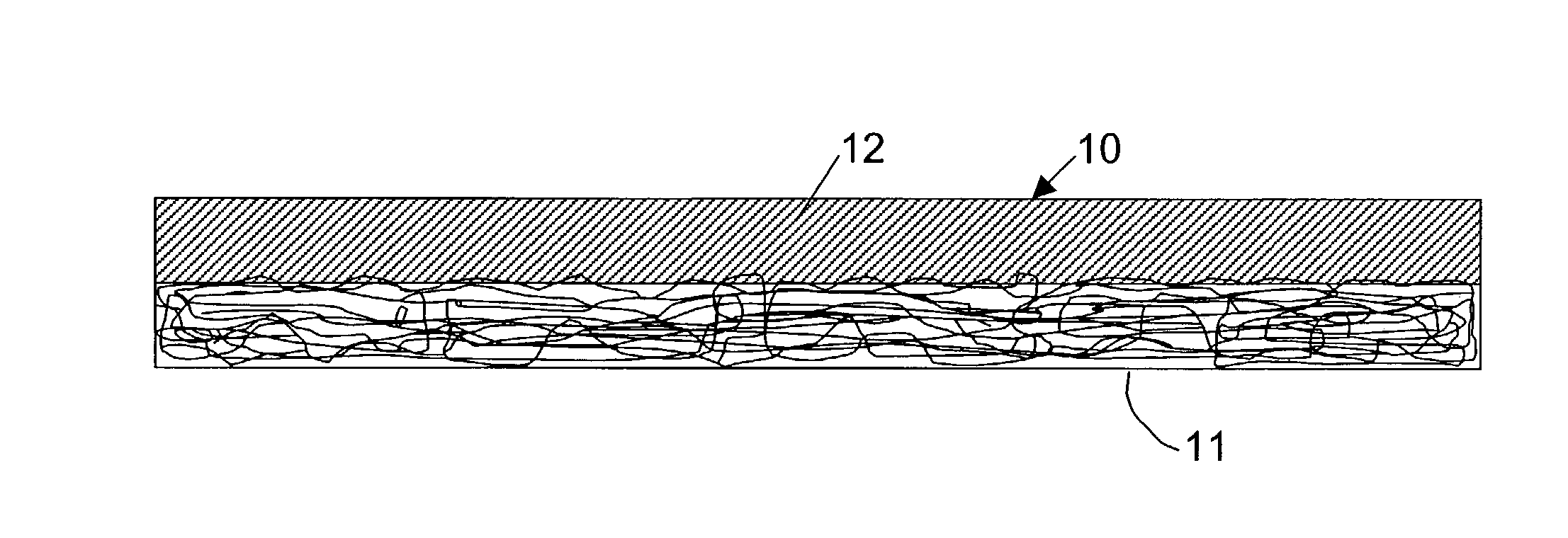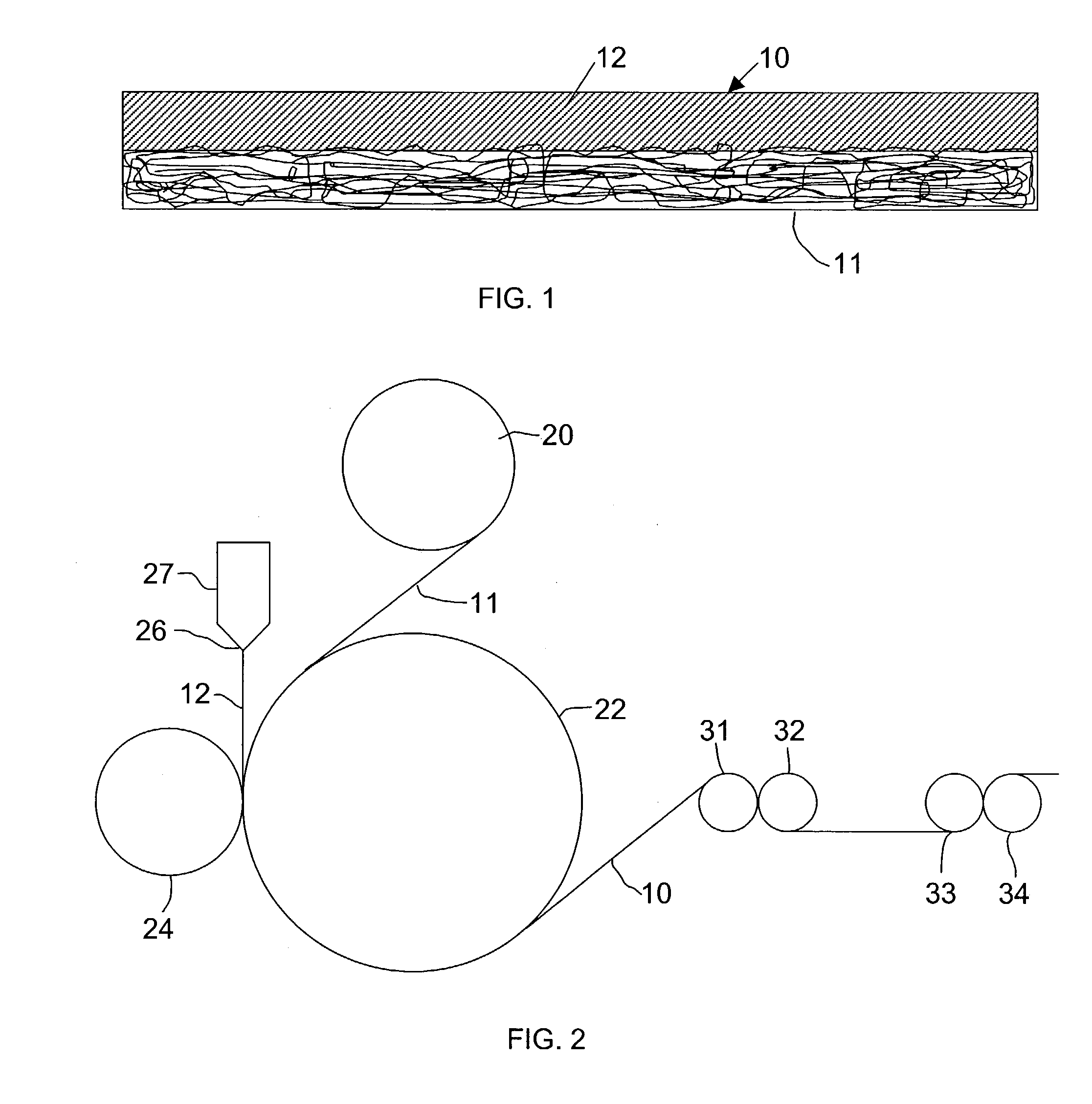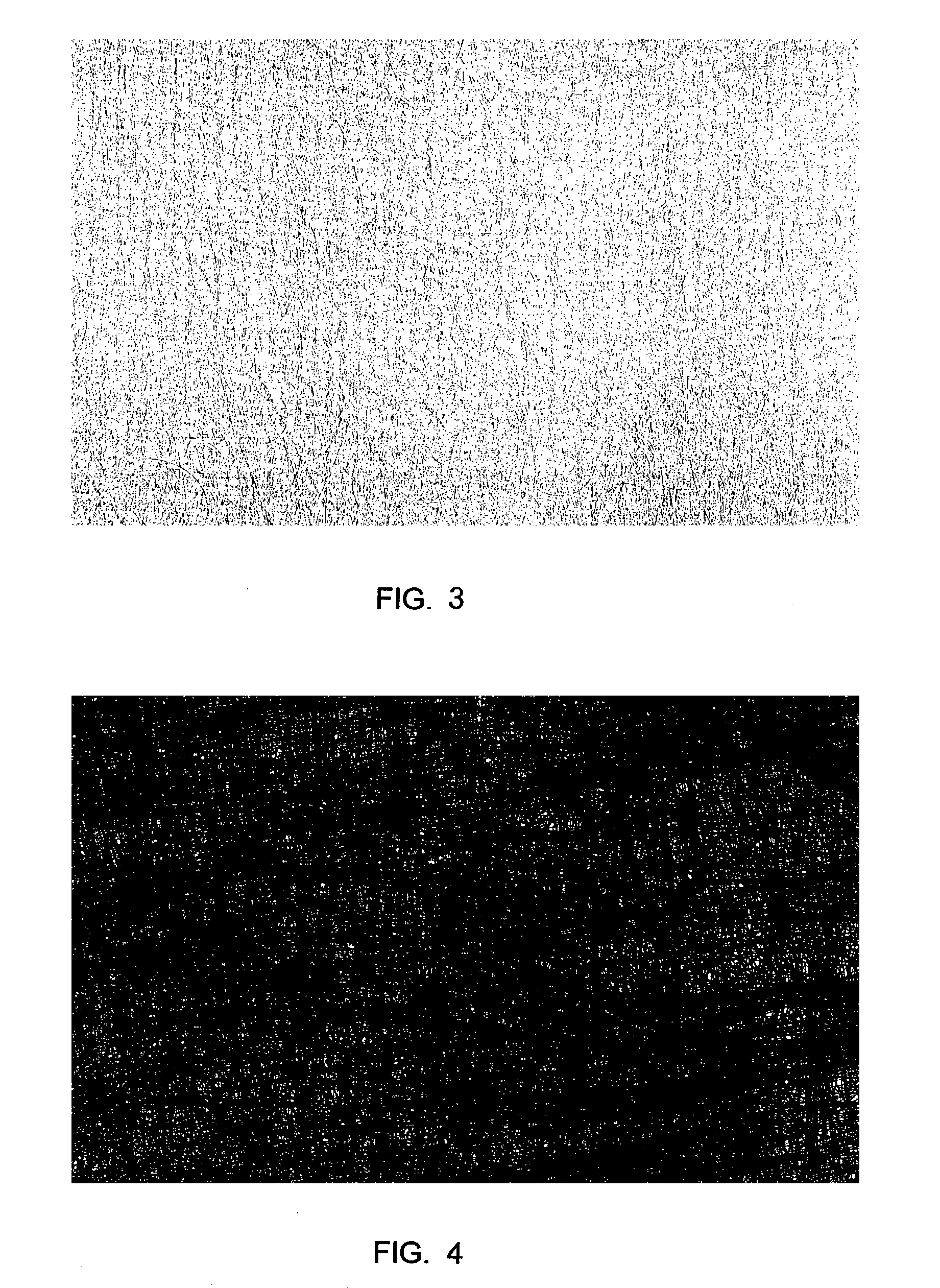Microporous composite sheet material
- Summary
- Abstract
- Description
- Claims
- Application Information
AI Technical Summary
Benefits of technology
Problems solved by technology
Method used
Image
Examples
example 1
[0051]Typar® 3201, a spunbonded polypropylene nonwoven fabric produced by Reemay, Inc. of Old Hickory, Tenn., was used as the fibrous nonwoven substrate for producing a high MVTR extrusion coated composite sheet material. Typar® 3201 is a spunbond polypropylene nonwoven fabric having a basis weight of 64 g / m2, a thickness of 0.305 mm (12 mils), an MD grab tensile strength of 351 N (79 lbs.), a CD grab tensile strength of 329 N (74 lbs.), a trapezoidal tear strength of 165 N (37 lbs.) in the MD and 151 N (34 lbs.) in the CD, and a mullen burst strength of 393 Pascal (57 psi.). This substrate was extrusion-coated with a polypropylene polymer composition containing about 50 percent by weight calcium carbonate filler. The polymer film was extruded onto the substrate at two different basis weights: 25 g / m2 and 35 g / m2. The resulting composite was incrementally stretched in the CD using equipment similar to that shown in FIG. 2. Samples of the fabric were taken at three locations across t...
example 2
[0053]Typar 3201, a spunbond polypropylene nonwoven fabric having a basis weight of 64 g / m2 (1.9 oz / yd2), was extrusion coated as in Example 1, using a polypropylene with about 50 percent by weight calcium carbonate filler applied at a basis weight of 35 g / m2. The fabric was incrementally stretched in the CD by passing through incremental stretching rollers set at 1.4 mm (55 mils) and at 1.5 mm (60 mils) engagement, respectively. Samples of the fabric were taken at three locations across the width of the fabric, near the left, center, and near the right, and the physical properties of these samples were evaluated. Average values for the three samples are shown in Table 2 below.
[0054]
TABLE 2TestSample 3Sample 4Sample 5Stretch Roll setting mm 1.4 (55) 1.4 (55) 1.5 (60)(mils)Peel adhesion (g / 1 inch)Fiber tearFiber tearFiber tearHydrohead (cm) >55 >55 >55Gurley Porosity>400>400>400Thickness mm (mils) 0.41 (16) 0.43 (17) 0.51 (20)Grab Tensile, MD N (lbs.) 427 (96) 489 (110)Grab Tens...
example 3
[0055]In this example, the tensile properties of several of the high tenacity spunbond nonwoven substrates used in the present invention (Typar®) are contrasted with commercially available spunbond nonwoven fabrics. In Table 3, Typar spunbond nonwoven fabric in three different basis weights is compared to a spunbond polypropylene fabric produced by a Reicofil spunbond process. The Typar nonwoven fabric is a spunbond nonwoven fabric formed from mechanically cold-drawn polypropylene filaments. In the nonwoven fabric produced by the Reicofil process, the polypropylene filaments are attenuated pneumatically by a slot draw attenuator located in the spinline directly beneath where the molten polymer filaments are extruded.
[0056]
TABLE 3ProductTyparTyparTyparReicofilBasis Weight g / m2 57 (1.7) 64 (1.9) 78 (2.3) 57 (1.7)(oz / yd2)MD Grab Tensile N316 (71)365 (82)472 (106)160 (36)(lbs.)CD Grab Tensile N294 (66)334 (75)436 (98)129 (29)(lbs.)MD Trap Tear N (lbs.)151 (34)165 (37)178 (40)CD Trap Tea...
PUM
| Property | Measurement | Unit |
|---|---|---|
| Temperature | aaaaa | aaaaa |
| Length | aaaaa | aaaaa |
| Linear density | aaaaa | aaaaa |
Abstract
Description
Claims
Application Information
 Login to View More
Login to View More - R&D
- Intellectual Property
- Life Sciences
- Materials
- Tech Scout
- Unparalleled Data Quality
- Higher Quality Content
- 60% Fewer Hallucinations
Browse by: Latest US Patents, China's latest patents, Technical Efficacy Thesaurus, Application Domain, Technology Topic, Popular Technical Reports.
© 2025 PatSnap. All rights reserved.Legal|Privacy policy|Modern Slavery Act Transparency Statement|Sitemap|About US| Contact US: help@patsnap.com



